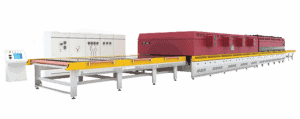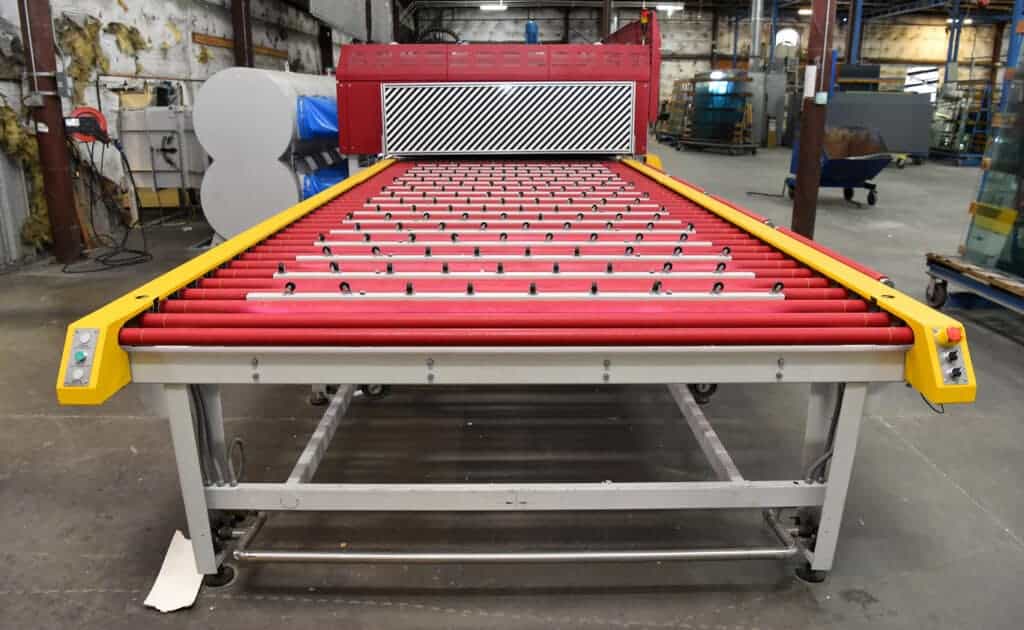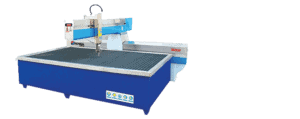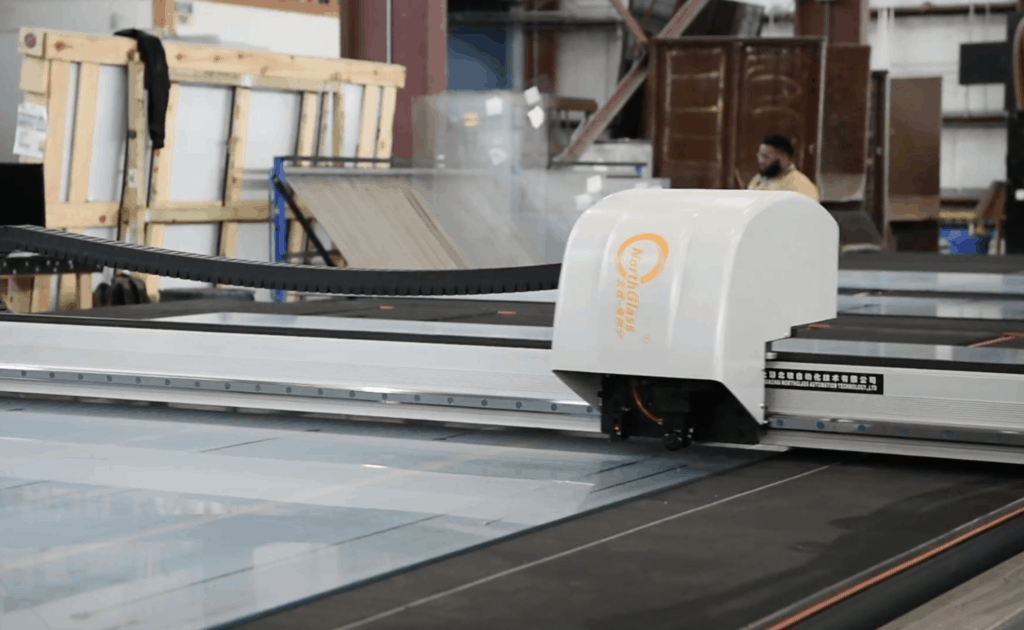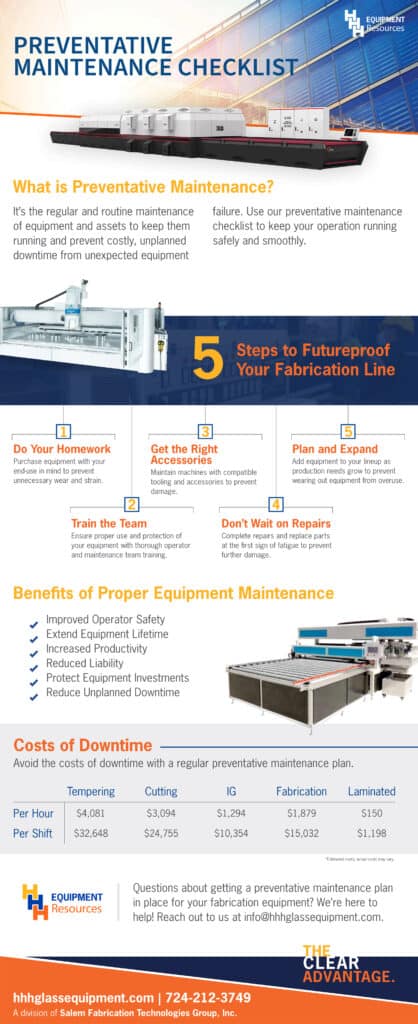Eliminate Tempered Glass Marking
Troubleshooting post-tempering glass marking
Glass marking is also known as heat stain, skunk stripe or white haze. No matter what you call it, we all agree seeing imperfect tempered glass coming off the line is frustrating. To help solve this issue, our glass tempering experts share their process determining causes of and appropriate fixes for common glass marking issues.
Eliminate Tempered Glass Marking: The HHH Process
When fixing any kind of glass marking, HHH Equipment experts start with reading the glass. By understanding basic glass properties and following best practices, tempering service technicians will, too, learn how to read the glass to take corrective action.
Step 1: Define Marking Characteristics
While looking at the glass, define the type of marking using the following questions:
- Location: Is the marking all over the glass, concentrated toward the middle of the sheet or outlining the glass edge?
- Color: Are the marks white and opaque, colorless and translucent, or darker in color?
- Edge Traits: Are the mark edges rounded or sharp?
- Warping: Is the glass bowed or warped?
- Other Characteristics: Does the mark look like a scratch, scuff, stripe, crater or something sandblasted underneath the glass?
Step 2: Identify Causes
The greater your understanding of the tempering process, the faster the marking description will help you identify the cause. Based on the questions above. a sample of common marking descriptions and corresponding causes are listed in the table below.
Description |
Potential Cause(s) |
| Opaque white stripes in the middle of the glass. These stripes may look sandblasted. | · Generally these stripes are caused by contaminants on the ceramic rolls. These contaminants may be glass chips remaining from improperly seemed edges or chips leftover after washing that are carried into the furnace.· This form of marking could also be refractory. If so, the entire opaque area may be caused from over-heating early in the heating cycle. These marks will be exaggerated due to overheating on the bottom side of the glass.· If this mark is accompanied by glass rising up to a water holding profile, it is caused by more heat on the bottom of the glass than on the top. When this happens, small pieces of glass are pulled from the middle and reapplied by the heat.· Another cause may be the actual texture of the ceramic rolls.
Note: Typically, opaque defects visible in transmitted light reveal sources impacting the glass’s bottom surface. Defects visible with reflected light are commonly related to the top surface or coating issues. Defects visible via reflected light may also reveal bottom surface deformation or blistering due to excessive temperatures. |
| Colorless, translucent marks featuring rounded edges with characteristics denoting that something was pressed into the bottom of the glass. | · These marks most likely occur late in the heat cycle by debris pressed into the glass. Check for large pieces of glass or dirt stuck to the ceramic rolls. |
| Glass warping on only one side. | · The glass is not lying flat in the furnace or the heating was not uniform somewhere on the glass. |
| Small scratches running parallel to the direction of glass travel, but across the width of the glass. | · Normally this marking pattern caused by a roll not turning at the same speed as the adjacent rolls. May indicate belt failure or end cap failure, or drag from roll seal materials. |
Step 3: Take Action
While glass marking can feature multiple physical characteristics, the causes point to three categories of corrective action.
Debris-Related Marking:
Glass chips cause the majority of glass marking. Glass chips are typically directly related to the quality of the seamed edges. Other debris can also cause marking, so cleaning your furnace, ceramic rolls, loading table and the furnace environment is the first corrective action step. The second step is to inspect all seamed edges to ensure no fracturing at the edges. The third step would be to inspect all glass after washing to ensure no glass particles remain.
Heat Inconsistency-Related Marking:
Double check furnace temperatures, and make sure both roller temperatures and top convection heat is similar. You may need to slightly increase top elements or convection temperature or decrease bottom temperature.
Roller Speed-Related Marking:
Correct roller speed by making sure the drive speed is consistent and that ceramic rollers and bearings function appropriately.
By following these glass marking troubleshooting steps, you may reduce tempered glass marking and increase profitability. For more advice and insight on glass marking, email our experts at info@hhhglassequipment.com or call 360-99305644.
